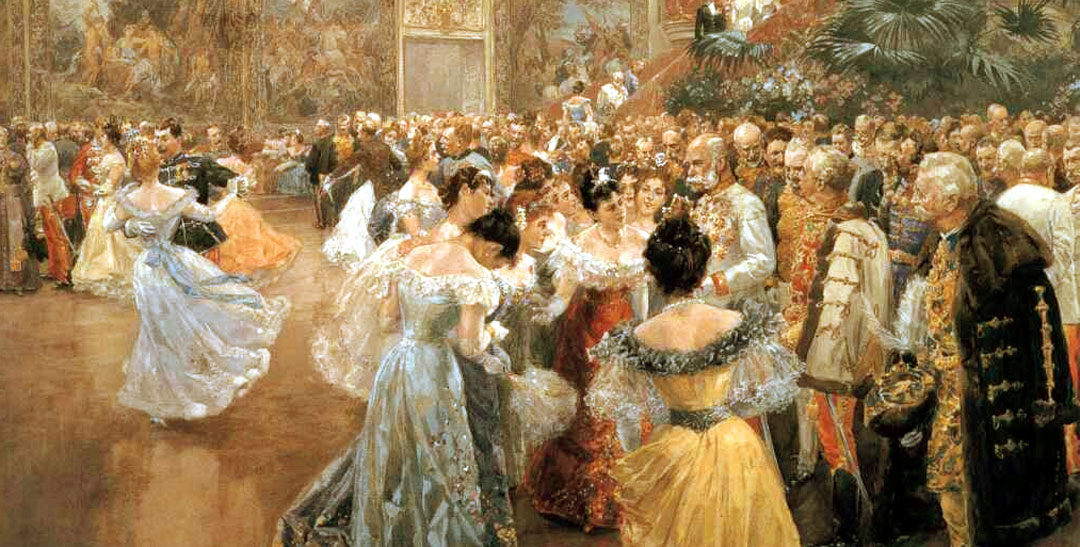STAGE PERFORMANCES
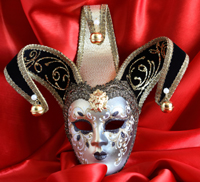 Opera
Opera
Opera was in its golden age during the mid-to-late 1800s, and Piper’s Opera House in Virginia City hosted operas as well as variety entertainment.
The most noted operatic composers of the day were Giuseppe Verdi (1813-1901, Rigoletto, La Traviata, Aida) and Richard Wagner (1814-1883 – Lohengrin, The Ring Cycle), but Giacomo Puccini (1858-1924 – Tosca, La Boehme,Madame Butterfly) and Richard Straus (1864-1949 – Der Rosenkavalier) were often performed as well.
Operetta was a popular artform, and the beloved productions of Gilbert and Sullivan delighted audiences then as much as they do today. W. S. Gilbert (1836–1911) and Arthur Sullivan (1842–1900) wrote fourteen operettas between 1871 and 1896, among them H.M.S. Pinafore, The Mikado and The Pirates of Penzance.
Bands, Choral Societies and Other Musical Events
Free concerts were often performed at public halls by local or travelling choral groups. Such concerts frequently were held to benefit a charitable cause, or to raise funds for medical care for wounded or injured citizens.
Musical notables appeared individually or ensemble, among them the most popular composer of marches of all time, John Philip Souza.
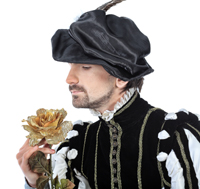 Theater
Theater
Classical plays were standard fare in cities large and small. Shakespearean thespian Edwin Booth (brother of John Wilkes Booth) appeared on stage at Pipers Opera House in Virginia City, as did other famous actors of the time such as John McCullough and Laurence Barret.
More bawdy popular fare appeared as well, such as actress Adah Isaacs Menken appearing horseback on stage, clad in nothing but a body stocking), and Joe Jefferson giving a rousing version of Rip Van Winkle.
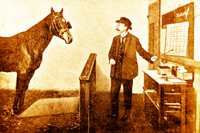 Speeches and Lectures
Speeches and Lectures
Speakers on many topics were popular in the 1800s. The presentations ranged from humorists and politicians to spiritualists, suffragists, temperance speakers, and many, many more.
Mark Twain was a well-loved humorist on the lecture circuit; Laura de Force Gordon (one of the first women lawyers in California) spoke on spiritualism and later on women’s rights. Social reformer Henry Ward Beecher, brother of author Harriet Beecher Stowe, appeared in Virginia City, as did the dwarf and famous impersonator General Tom Thumb.
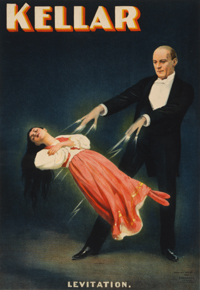 Variety and Magic Acts
Variety and Magic Acts
Magic as a form of popular entertainment began to emerge in the mid-1800s. In 1845 a former clock-maker by the name of Jean Eugène Robert-Houdin opened a magic theater in Paris. J N Maskelyne opened Egyptian Hall in London in 1873, and the famous French magician Herrmann the Great contributed traditional theatrical garb of tails and tophat to the growing entertainment medium.
Harry Houdini, the famous illusionist and escape artist, took the theatrical performance of magic and illusion to new heights in the late 1800s.
SOIREES AND MUSICALES
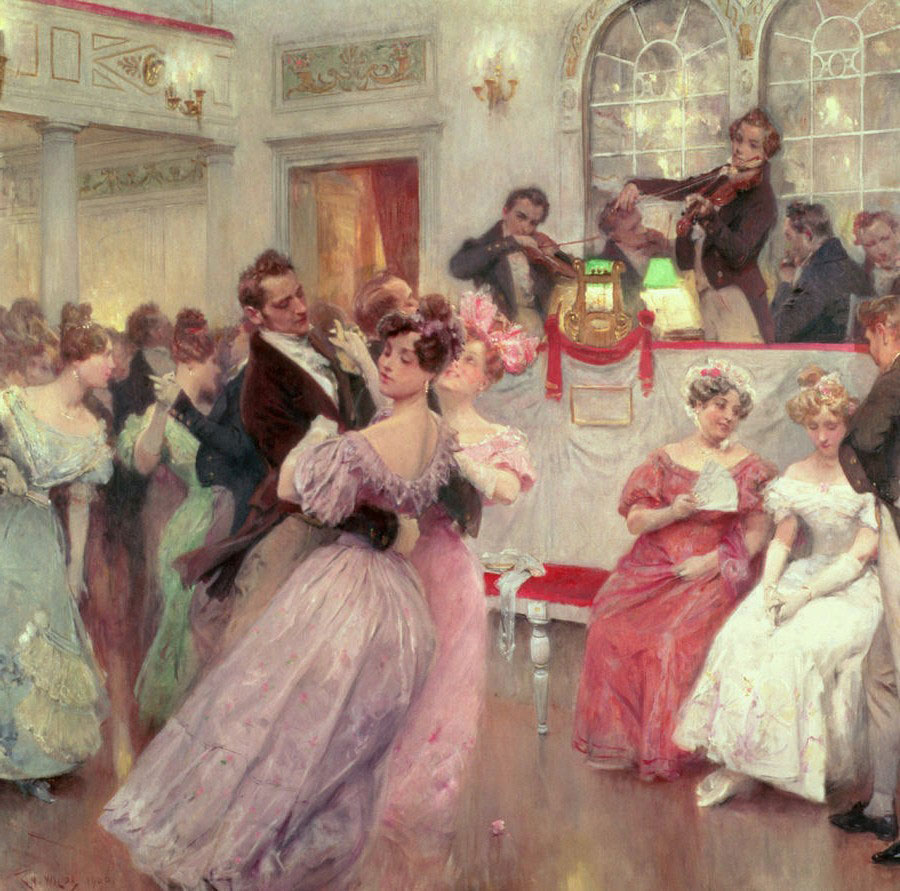 Dances
Dances
Formal dances and balls brought the community together. They served a variety of purposes, from introducing eligible young women to society, to public display of wealth and social position, to simple fun and good exercise.
The dances of the era ranged from graceful and elaborate waltzes to polkas to quadrilles (similar to modern square dancing) and reels (a form of line dancing). Steps and figures were published in manuals and widely distributed; many are still in use today.
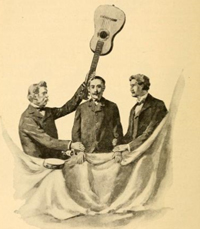 Seances
Seances
Seances could be either simple entertainment or serious attempts to communicate with the deceased. After the Civil War many bereaved families were drawn into the spiritualism movement. but after many erstwhile mediums were exposed as frauds, seances were viewed more as amusements, somewhat like fotune-telling or astrology.
See also Funeral Customs: Spiritualism
IMAGE: By William E. Robinson [Public domain], via Wikimedia Commons
SPECIAL EVENTS
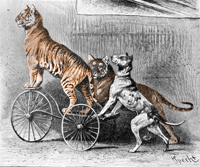 Circuses
Circuses
Though circuses had been around since the latter part of the 18th century, the earliest forms were primarily equestrian acts. The modern circus originated in England in the mid 1700s and was brought to Philadelphia in 1793 by an Englishman, John Bill Ricketts, who brought the traditional format of a ringmaster introducing a number of varied acts.
The huge open tents known as ‘Big Tops’ were introduced in the mid 1800s, replacing permanent open-air structures similar to today’s stadiums, but with very limited seating. The traditional ‘three rings’ were brought on the scene by P.T. Barnum, who retained the original 42-foot-diameter of the rings. This size was adopted by promoters in the mid 1700s as the proper size to allow cantering horses to circle comfortably while their riders performed acrobatic feats on their backs.
Barnum was one of the first circus owners to use trains to move his show from place to place, and was perhaps the first to buy his own train for the purpose.
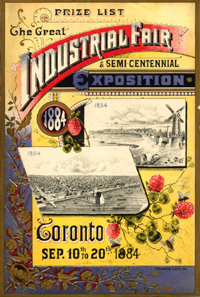 Fairs and Exhibitions
Fairs and Exhibitions
As opposed to local fairs, where farm goods and domestic products were displayed, world fairs or ‘expositions’ were dedicated to global science and technology. The earliest such fairs alternated between Europe and the U.S.; London in 1851, New York in 1853, London in again in 1862, Philadelphia in 1876. The first such fair was organized by Prince Albert, husband of Queen Victoria.
These fairs played from six weeks to six months and featured permanent structures erected in the fairground by hosting companies or countries. The fairs were seen as major events and were attended by such notables as Queen Victoria, Charles Dickens, President Franklin Pierce, and President Ulysses Grant.
IMAGE: By Toronto Lithographing Company [Public domain or Public domain], via Wikimedia Commons
GAMBLING
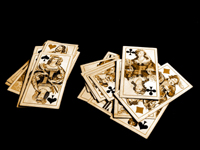 Card Games
Card Games
Playing cards date back to early China; professionally printed woodcut decks were popular in 1400s Europe. Various symbols were used to denote suits, depending on the country, but by the mid 1800s the United States version incorporated the French hearts-diamonds-clubs-spades convention. The joker was a U.S. invention and appeared at about the same time.
Cards became a staple pastime in 1800s America, as an inexpensive and portable gambling device. Faro was the most popular card game during the Civil War era, and was played using a box called a ‘shoe’ in which the card deck was placed. A full suit of thirteen cards was laid out on a table, and players put down bets on one or more cards. The dealer then dealt two cards from the shoe, a ‘winning card’ and a ‘losing card’. Bets on the same denomination as the winning card paid even money; on the losing card lost. The ‘shoe’ was so frequently rigged that it became impossible to find an honest game, and the game ultimately died out.
A form of poker first appeared in New Orleans, Louisiana in the late 1820s, and was played with 20 cards. The game rapidly spread to the rest of the U.S. and was soon played with all 52 cards. Blackjack or ’21’ is far older; it was first described in print by Miguel de Cervantes (author of “Don Quixote”) around 1600. The term ‘blackjack’ arose when gambling houses trying to promote the game gave a bonus payout for hands containing both the ace of spades and either black jack (spades or clubs). Monte, a game similar to faro but matching suits instead of denominations, was another popular game imported from Mexico during the Gold Rush.
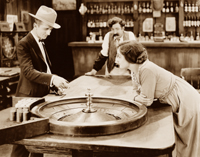 Gaming Machines
Gaming Machines
Roulette wheels were developed in Paris in the late 1790s. The early machines had various color and number schemes, including early American models with numbers up to 28 and single and double zeros, as well as an American Eagle.
In 1891, Sittman and Pitt of Brooklyn, New York, U.S. developed a gambling machine which was an early version of the modern slot machine.
SPORTS AND COMPETITIONS
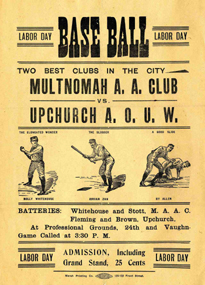 Team Sports
Team Sports
American baseball probably evolved from the British games cricket and rounders, though credit for invention of the game is often given to Abner Doubleday in the 1830s. Civil War soldiers brought the game west with them.
American football derived from the English game of rugby, and appeared at about the same time.
Basketball was invented in 1891 by a Massachusetts physical education instructor named Dr. James Naismith. He was looking for a way to keep his gym class active during long New England winters. The original ‘basket’ was actually a peach basket nailed to an elevated track.
IMAGE: By Multnomah Athletic Club (Oregon Historical Society) [Public domain], via Wikimedia Commons
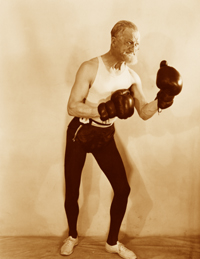 Prize Fights
Prize Fights
Boxing matches were routine in the American west, and had been an Olympic sport since the days of the ancient Greeks. Bare-knuckle bouts had been common in England in the 1700s, but few rules were accepted until around 1743; before then prizefights were a free-for-all. The Queensbury rules used today were written in 1867.
Wrestling has an equally ancient lineage, deriving not only from the Greek Olympic contests but from Native American roots as well. The first official national wrestling match took place in New York City in 1888.
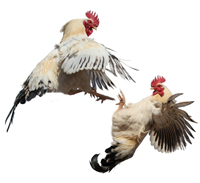 Animal Fights
Animal Fights
Matches between wild and domestic animals, often of different species, were a common form of entertainment. Chickens were imported to the U.S. for fighting long before they became a staple at the dinner table.
Newspapers of the day also report organized matches between bulldogs and wildcats, dogs and rats, bears and dogs, and other lethal combinations. It was not until the formation of various SPCA groups that organized animal fights began to die out. The San Francisco SPCA received its charter in April of 1868, the fourth SPCA in the nation.
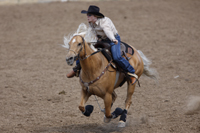 Horse Races
Horse Races
As with many other sports, horse racing began as an informal competition in the early days of mankind, becoming an organized sport only much later.
The sport takes many forms, from simple jockey-ridden races to steeplechases, harness racing, endurance races, and barrel racing. The American quarterhourse is the preferred breed for short-sprint races and barrel races, getting its name from the quarter-mile length that is its optimum race. Standardbreds are used for harness racing, thoroughbreds for medium distances, Arabians for endurance racing, and thoroughbreds for steeplechasing.
SOCIAL GROUPS
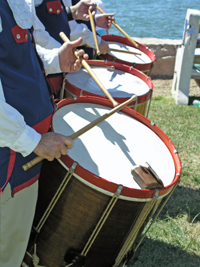 Military Groups
Military Groups
There were multiple groups of war veterans in California in the mid 1800s, overlapping in much the same way that the veterans today of the two World Wars, and the Vietnam war overlap. Military groups providing social support, medical benefits, and the like flourished during the 1800s.
The oldest group alive during the 1860s were veterans of the War of 1812, analogous to World War I veterans. They would have been in their 70s during the Civil War, too old to fight and knowing only outmoded battle techniques based on smooth-bore weaponry. They would, however, have participated in military parades and events if they were physically able.
The Mexican-American War (1846–1848) ceded California, New Mexico and Arizona to the U.S., opening the western frontier for American settlement. Veterans of this war would be analogous to World War II veterans, in their 30s and 40s, and took an active part in leadership during the Civil War. They would have formed the elder tranche of veterans participating in ex-military activities such as veteran’s groups, parade battalions, and the like.
Finally, the Civil War veterans on both sides continued to band together for society, social connections, and social occasions. They would have been analogous to the Vietnam War veterans, and formed a large proportion of the male population of the day.
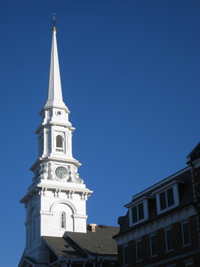 Religious Groups
Religious Groups
Religious communities played a large part in the social life of the 1860s. Ethnic groups tended to divide along religious lines as well; Irish and Mexican groups were largely Catholic (the most populous religious group in 1860), while Scots-Irish tended to be Presbyterian, Germans Lutheran, English Episcopalian or Methodist, and so on. The primary effect of this was to create ethnic-religious communities within the larger population.
These communities became the center of secular as well as religious activities. The church was a social center offering everything from Sunday picnics to Saturday dances, welfare societies and choral groups, book exchanges and sewing circles. The church became the hub around which the communities’ social life revolved.
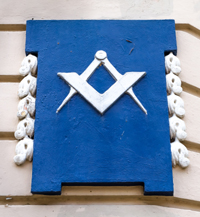 Fraternal Organizations
Fraternal Organizations
Fraternal organizations in the 1860s were legion. The Masons were a large contingent, boasting members such as Mark Twain, Henry Houdini, Kit Carson, Conan Doyle, and Davy Crockett.
In addition there were the Odd Fellows, the Knights of Pythias and Sons of Temperance, the Hibernian Society, and multiple Benevolent Societies. Many of these groups had their own meeting halls, their own cemeteries, and of course their own social activities around which their lives revolved.
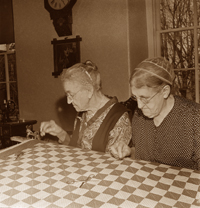 Other Groups
Other Groups
In addition to the formal groups and organizations that dominated the social life of the citizenry, there were sewing groups, ladies’ aid organizations, auxiliaries, book clubs, music ensembles, art clubs, and a host of other organizations dedicated to fostering community and good works on the frontier.
FURTHER READING AND OTHER REFERENCES
Caveney, Mike and Jim Steinmeyer. Magic: 1400s-1950s. Taschen, 2013
Dary, David. Seeking Pleasure in the Old West. University Press of Kansas, 1995
“Dance Instruction Manuals”, Library of Congress, http://memory.loc.gov/ammem/dihtml/dihome.html
(Posted October 2015)
